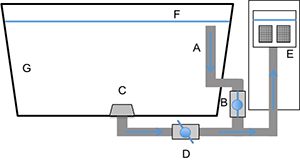As aquaculture production techniques streamline, interest in captive breeding for marine fish species increases. The food, ornamental, and bait industries all benefit from expanding the development of aquaculture techniques for desirable marine fish species. A significant limitation in developing aquaculture protocols for marine fish species is an adequate understanding of viable egg production and larval development. The first step in that process is to efficiently collect fertilized embryos, usually referred to as eggs, for examination and further development. This 6-page fact sheet written by Cortney Ohs, John Marcellus, Eric Cassiano, and Jason Broach and published by the UF/IFAS Program in Fisheries and Aquatic Sciences of the School of Forest Resources and Conservation includes directions for construction and operation of two types of pelagic egg collectors: pre-filter and floating airlift.
http://edis.ifas.ufl.edu/fa211
Tag: Jason Broach
Storage of Decapsulated Artemia (Brine Shrimp)
Artemia (brine shrimp) are good food for larval fish, but they have to be removed from their shells before many species can eat them. The process can be time- and labor-intensive, especially since it is often performed every day. Fortunately, this 3-page fact sheet written by Jason Broach, Cortney Ohs, and Isaac Lee and published by the UF/IFAS School of Forest Resources and Conservation, Program in Fisheries and Aquatic Sciences describes a method for storing a 7-day supply of the brine shrimp that will allow the task to be done just once a week.
http://edis.ifas.ufl.edu/fa203

